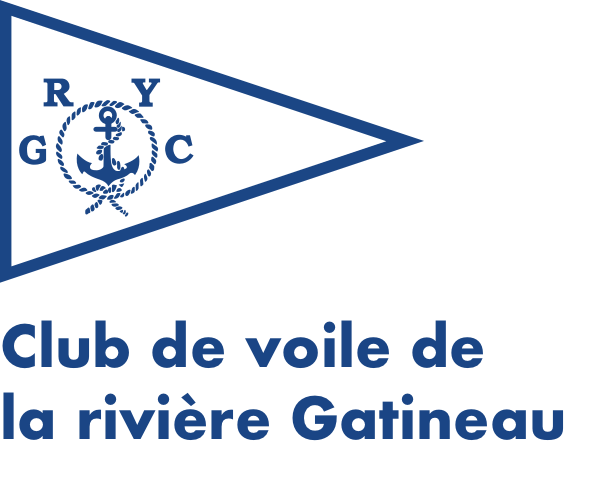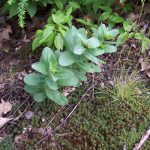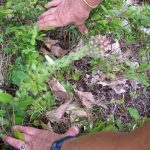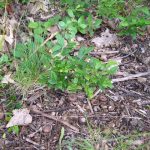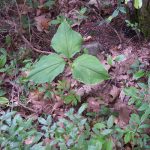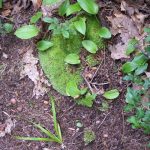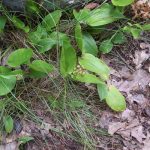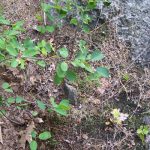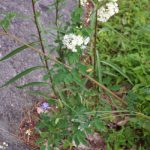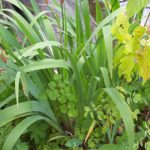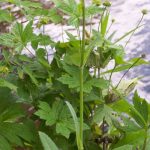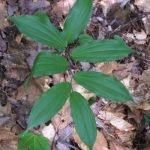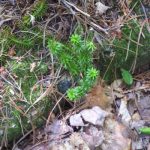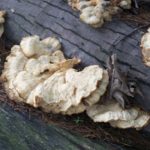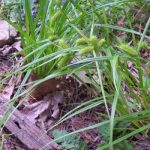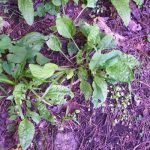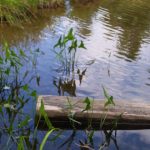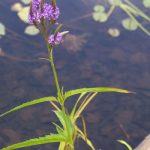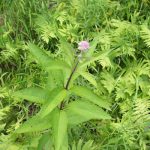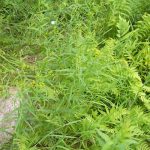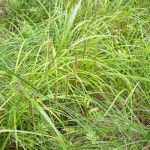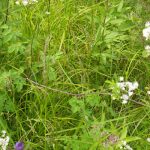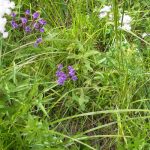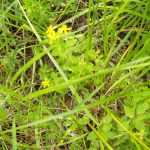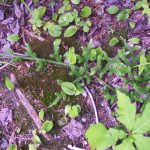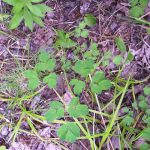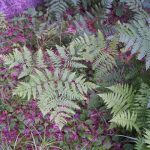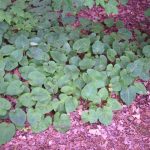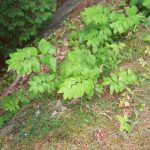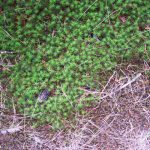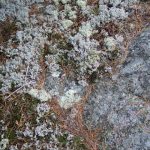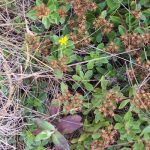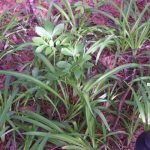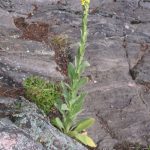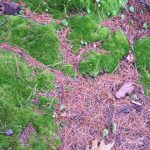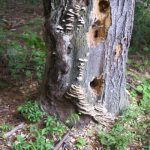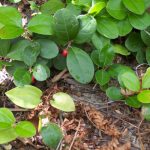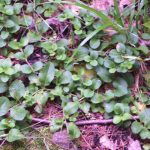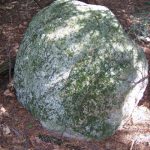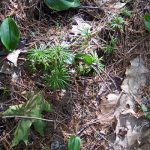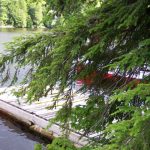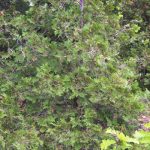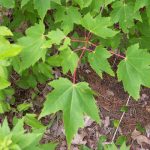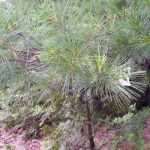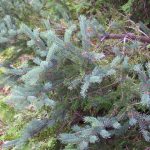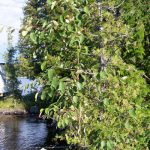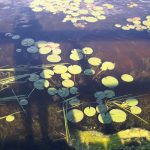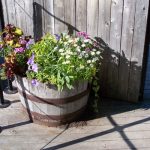Plantes de l’ile
The GRYC Islands has a large number of plants and trees. Nancy Ruddell has taken photos of many of these on the islands and have identified most of the them. This gives a snapshot of the island's flora in the month of July, 2007. This project was done with the help of Jane and Keith Horner, Anneke Schwarz, Nicole Casteran and Jean-Pierre Hardy. More photos will be taken in May-June when the spring plants are in bloom.
See pictures of the flowers and trees.
The Trees
The dominant trees on the islands are evergreens (white pines, hemlocks, cedars and spruces). Deciduous trees, such as maples, birches and red oaks grow at the south end of the island and near the clubhouse.
There is a logic to where trees grow. Hemlock grow on cool, wet north-facing slopes, and white pines grow where the soil lacks the nutrients needed by other trees. White pine is the tallest tree on the island, distinguished by five-needle clusters (the red pine has two-needle clusters).
Plants
In the spring, the ground is carpeted with a variety of flowering plants and throughout the summer months a large variety of flowering plants, grasses, sedges and mosses grow in rock crevices, under the trees and in the open spaces near the water's edge.
Spring Flowers
Tiny spring plants thrive in shallow acid soil covered with leaves, which provide both nourishment and protection. After the snow melts and before the leaves are fully formed, spring flowers capture the sunlight to complete their reproductive cycle. Over a few short weeks, spring flowers bloom and produce seeds that ensure the survival of their species. Examples of spring flowers are trillium, Canada mayflower and Solomon's seal. To protect these delicate plants, it is important not to pick the flowers.
Summer and Fall Plants
Although less spectacular than spring flowers, a number of flowering plants grace the island during the rest of the growing season. They include yarrow, golden rod, asters and sedums. A variety of ferns and mosses cling to rocks moistened by groundwater, and grow in the damp soil around the bay between the two eastern points, opposite the canoe launching area.
Lichens
These amazing plants, grow on trees, large boulders and bedrocks throughout the islands. They are slow-growing, long living symbiotic organisms consisting of fungi and algae. The boulders are called erratics because they are not part of the original landscape. They were carried from a distant location in the ice sheet that once covered this region.
The Land Formation
The GRYC islands rest on the bedrock that forms the foundation of the Gatineau hills. During the last ice age, the area was covered with ice over two kilometers thick. As the ice moved across the earth's surface, it etched scratches into the bedrock leaving scars that are still visible today. These scars can be seen on the rocks at the two eastern points of the islands. (Richen's Point and the lighthouse point).
The trails to the points at the north and south ends of the islands take us along bedrock that consists of a common grey rock called gneiss that has been rounded and scraped by glaciers. At the points, narrow white bands of granitic rocks can be seen cutting through the gneiss. Granitic rocks are more than a billion years old!
What's in a Name?
Where did the name "Gatineau" come from? Originally from France, Nicholas Gatineau Duplessis was a notary and clerk at the Trois-Rivières and Montréal courts. He explored the St. Maurice, Ottawa and Gatineau Rivers in the mid-1600s and established a fur trading post on a point of land adjacent to a river that flows into the Ottawa River. (the Gatineau?) Pointe Gatineau and the Gatineau River were the first landmarks to perpetuate the family's name.
A view from Neil Rask, GRYC Manager 2007
The animals and plants that inhabit the Gatineau River Yacht Club contribute to the unique atmosphere of the islands. They enhance our enjoyment of this magical place, and if we protect them, they will thrive for years to come.
Red squirrels and chipmunks make their home on the islands and beavers, herons and mergansers are frequent visitors. Families of red squirrels nest close to the lockers, under the laser deck and close to the diving rocks. They are cheeky little critters that scamper around hoping for handouts from people when they are eating or working on the boats. They even appear in the office as if they are trying to keep an eye on the staff. If you look closely at hollows in cedar and oak trees and in some sailboat tubes (masts and booms?), you can see their nests. In contrast to squirrels that are incredibly bold, chipmunks are shy animals. They have two distinctive stripes on their backs and their nests are burrowed three feet underground.
Over the years, beavers have built their lodges under the pram dock using tree branches and even a paddle or two. Each time, however, we have had to ask them to leave! Once the main lodge is constructed, subsequent generations may add more rooms which would cause havoc to sailors and swimmers alike. Since there is plenty of water in the Gatineau River, they don't need to build a dam. To protect their two or three kits, the adults growl and hiss when humans come close. In the early morning and at dusk, you can often see beavers swimming around the bay and slapping their tails to warn of approaching danger.
Mallards are often seen swimming around the islands. The male has a beautiful green head and the female has speckled brown and white feathers to camouflage her from predators. Mergansers have also been seen traveling in groups near the islands. They have reddish tail feathers that curl over their backs. Great blue herons are frequently seen gliding gracefully from perch to perch along the river, looking for fish and frogs to eat. With their long wings and crooked necks, these birds look a little like pterodactyls, or flying dinosaurs, that have been around since the age of the dinosaur. Palliated woodpeckers visit the islands occasionally to attack dead trees using their strong bills in search of insects. They are the largest bird in the woodpecker family and have a distinctive crown of red feathers.
How could we forget the insects? Wasps have been known to nest in canoes and boats that have been left at the club for too long. Black flies and mosquitoes are an irritant during May and June, although mosquitoes linger throughout the summer particularly at dusk as picnickers know only too well!
Good news! Leopard frogs eat flies and mosquitoes, and in the last few years their numbers have increased in canoe bay.
There are many trees and plants on the islands - cedar, oak, pine and spring and summer flowers. Old photos of the club show barren rocks where pines, firs, maples and birches now grow. Staff and volunteers clear dead branches off the pathways and other areas so members can setup their chairs and enjoy their picnics. Wood chips are placed over exposed roots and bare spots to protect against deterioration. Orchids called lady's slippers, bloom on the islands in the spring, and red, gold, orange and white mushrooms develop during periods of damp weather. There are several types of lichen and moss that grow on rocks and trees and blueberries and wintergreen are two plants that bear eatable berries. Several types of reeds grow in in the river to tease those who swim around the islands. Milfoil and water lilies can be seen in several locations, particularly at the entrance to the club and in the canoe bay.
Seen an animal or plant we've missed? Let us know.
Pictures
The GRYC Islands has a large number of plants and trees. Nancy Ruddell has taken photos of many of these on the islands and have identified most of the them. This gives a snapshot of the island's flora in the month of July, 2007. This project was done with the help of Jane and Keith Horner, Anneke Schwarz, Nicole Casteran and Jean-Pierre Hardy. More photos will be taken in May-June when the spring plants are in bloom.

